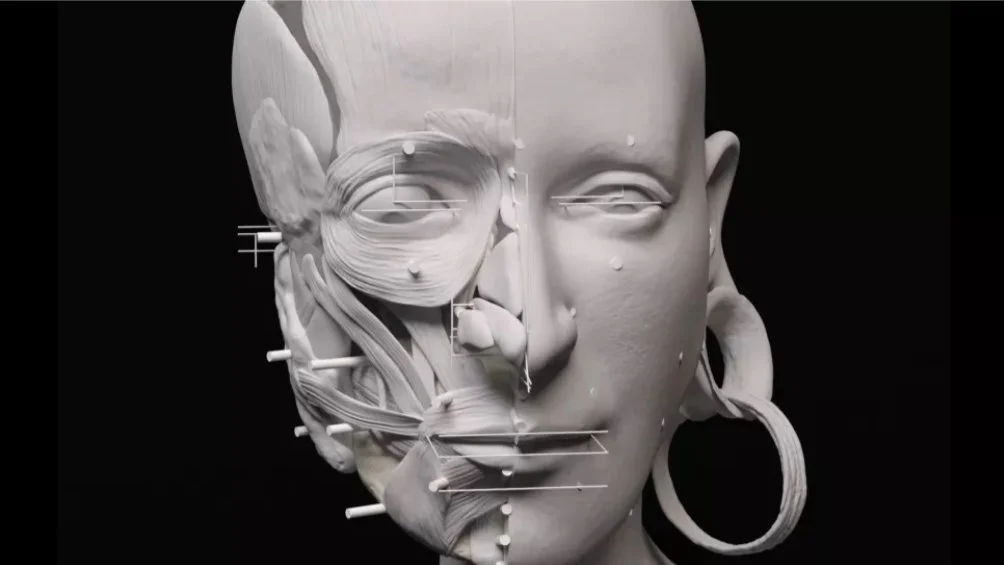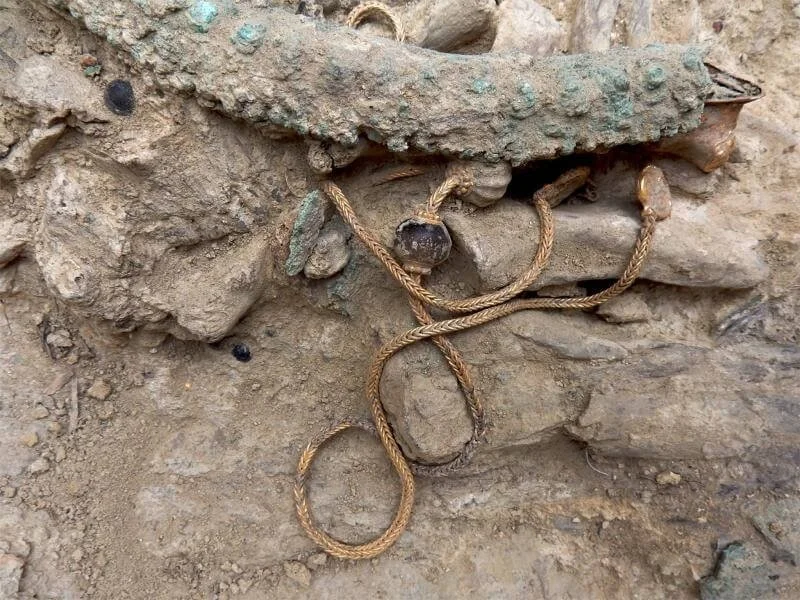\Even though we have a lot of evidence about mankind and its development through scientific research and archeological discoveries, there are still some "mysteries" to be explored. One of them is the facial features of people in different periods of their existence.
Thanks to modern scientific techniques and the help of artificial intelligence, researchers can now give us a digital picture of the appearance of these people - prehistoric or ancient - with relative accuracy.
Below are some of the best illustrations:
Stone Age woman (Czech Republic)
A skull initially misidentified as male, found in a cave in Mladeč (Czech Republic), turned out to be the skull of a 17-year-old Stone Age woman who lived about 31,000 years ago. Researchers believe the skull dates to the Upper Paleolithic, the Aurignacian period, and is one of the oldest Homo sapiens found in Europe.
Cicero Moraes / Jiri Sindelar/Karel Drbal
Woman from the Bronze Age (Spain)
Archeologists from the Autonomous University of Barcelona discovered the remains of a Bronze Age man and woman buried together in a ceramic vessel in the La Almoloya area. A scientific illustrator created a digital representation of the woman using part of her skull and her jewelry, particularly a silver crown, to estimate the size of her head.
Joana Bruno / ASOME / Universitat Autònoma de Barcelona
Stone Age Woman (Sweden)
The remains of this Neolithic woman were found in the late 1920s during the construction of a road in Lagmansören, Sweden. A forensic scientist spent more than 350 hours creating her likeness based on a representation of her skull and findings about migration in ancient Scandinavia.
Bronze Age woman (Czech Republic)
The bones of this Bronze Age woman, who is believed to have lived between 1880 BC and 1750 BC, were found in a cemetery near the village of Mikulovice in Bohemia, Czech Republic. This wealthy woman belonged to the Únětice culture, which is known for its metal objects. It is therefore not surprising that she was buried with five copper bracelets, two gold earrings and a necklace with more than 400 amber beads.
Αrchiv MZM
Neolithic Woman (Penang, Malaysia)
Using a combination of 3D images and computed tomography scans (CT) of modern Malaysians, researchers have created a virtual approximation of the face of this 40-year-old Neolithic woman. She was discovered during excavations at the Neolithic site of Guar Kepah in Penang, northwestern Malaysia. The bones of the "Penang woman" indicate that she lived about 5,700 years ago.
Universiti Sains Malaysia / Cicero Moraes
The Woman of the Middle Ages (Scotland)
Thanks to modern forensic science and technology, researchers were able to gain insight into life in medieval Scotland by creating a representation of this medieval woman, one of three skeletons found in a medieval tomb in Scotland. Chris Rynn, the forensic cranial anthropologist who made this lifelike facial reconstruction, said this is "the most symmetrical skull" they have ever worked on.
Chris Rynn
Medieval priests and bishops (Scotland)
The remains of these two men were found in the same medieval crypt in Scotland as those of the previous woman. Starting with a 3D scan of the two skulls, Rynn created these incredibly realistic facial renderings, right down to the priest's cleft lip and palate.
Chris Rynn
Young Neanderthal
About 70,000 years ago, this young Neanderthal lived in an area known as Doggerland, off the coast of Holland. Using a piece of skull found at the bottom of the North Sea, a paleoanthropological artist was able to create this bust of "Krijn", right down to the tumor above his right eyebrow.
RMO
Ancient Egyptians
The faces of three men who lived in the ancient Egyptian city of Abusir el-Meleq more than 2,000 years ago come to life in this rendering. DNA data was extracted from their mummies and used in a process called "forensic DNA phenotyping," which uses genetic analysis to predict the shape of facial features and other aspects of a person's physical appearance. This information helped scientists reconstruct the three men of age 25.
Parabon NanoLabs
"Vampire" of the 18th century
Buried in Griswold, Connecticut, in the mid-eighteenth century, the remains of this 55-year-old man were found with his thigh bones crossed over his chest - a sign that locals believed the man was a vampire. It used to be believed that people who died of tuberculosis, like this man, were vampires.
Parabon Nanolabs, Virginia Commonwealth University
The 18-year-old Avgi from Greece
Swedish sculptor Oscar Nilsson spent about 220 hours meticulously sculpting every muscle of Avgi's face. Not much is known about 18-year-old Avgi's life, except that her bones were found in the Theopetra Cave in central Greece and are about 9,000 years old.
Oscar Nilsson
Ancient Shaman
This hunter-gatherer was found in a grave at Skateholm, an archaeological site on the southern coast of Sweden, dating from 5,500 BC to 4,600 BC. The woman, who was 30 to 40 years old, sat on a "throne" made of deer antlers, was richly decorated and was believed to be an important person.
Gert Germeraad / Trelleborgs Museum
Ötzi the Iceman (Bronze Age, Alps)
Ötzi the Iceman was discovered by hikers in the Ötztal Alps on the Austrian-Italian border. He lived between 3350 and 3100 BC and died at the age of about 46 - a "long" life for a Bronze Age man. The complete facial reconstruction shows a man with a long nose, deep-set eyes, damaged skin and hair.
South Tyrol Museum of Archaeology / Foto Ochsenreiter
King Henry VII
Thanks to photogrammetry, graphic designer Matt Loughrey was able to create an amazingly photorealistic representation of England's King Henry VII, who died on April 21, 1509. Using the king's death mask - a wax mask from 1509 in which the king's likeness is preserved - Loughrey brought the ruler's face back to life.
Courtesy of Matt Loughrey / mycolorfulpast.com
Ancient Wari Queen
The skull of a Wari queen who lived about 1,200 years ago was discovered alongside numerous luxury items in a pyramid mausoleum called El Castillo de Huarmey in northern Lima, Peru. Queen Wari was buried in one chamber, while the rest of the tomb contained the remains of 58 noble women. They belonged to the Wari culture, which flourished in the area from 700 to 1,000 years ago AD. The reconstruction was made of plasticine and is based on the skull of the queen.
Oscar Nilsson





















